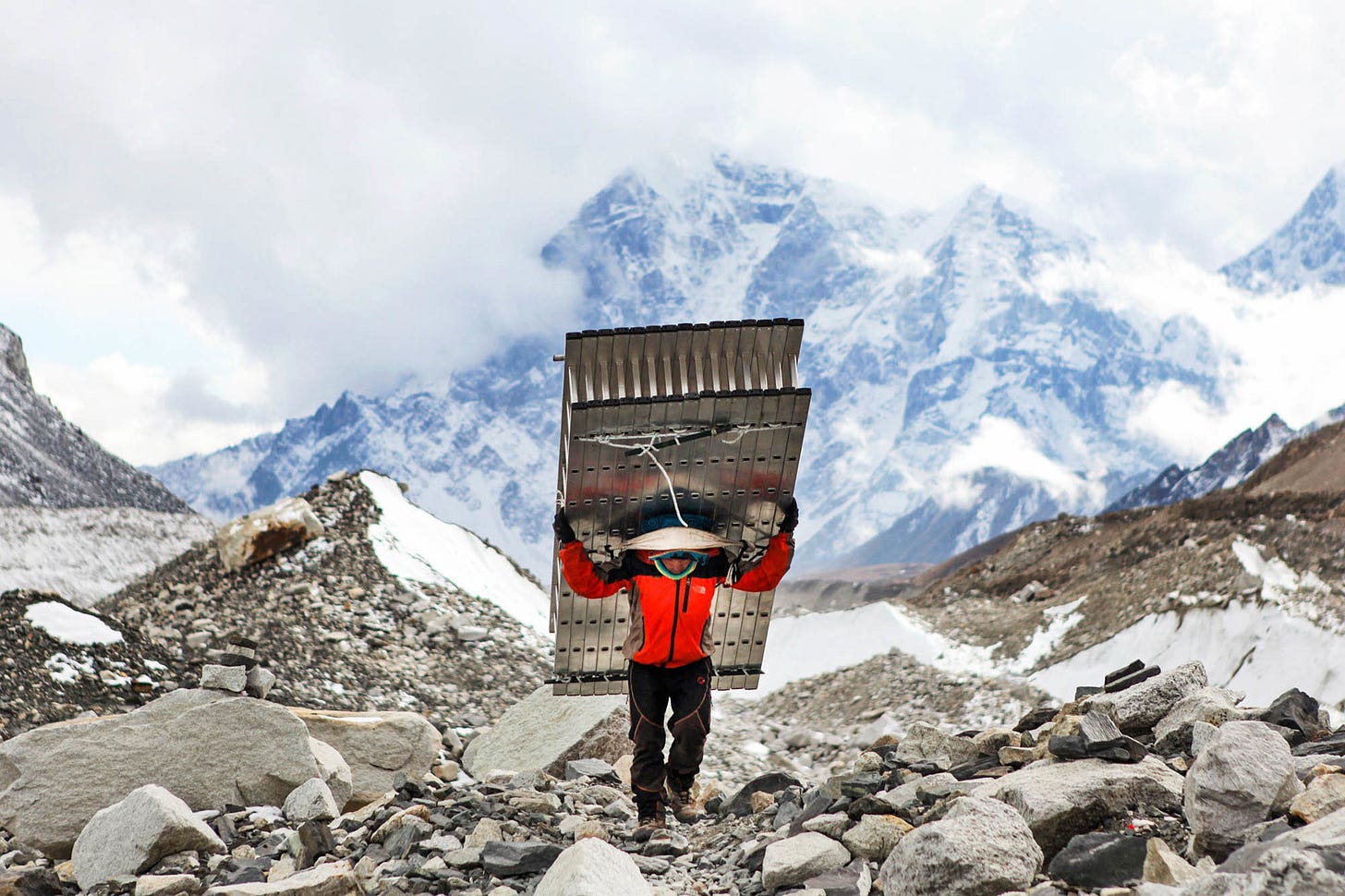Don't Die: Endurance Secrets of the Sherpa
New science on a group of the world's fittest humans reveals endurance insights.
Post summary
We’re covering what new science can tell us about the “super-athlete” physiology of the Nepali Sherpa and how you can boost your endurance.
High-altitude mountaineering is arguably the most taxing endurance sport on the planet, and the Sherpa people are revered as the most naturally gifted athletes in the sport.
Scientists at the University of Cambridge studied the Sherpa and discovered a few fascinating facts that might alter medicine and should change how we think about endurance exercise.
We’ll cover the Sherpa secret and also explain a specific workout that can help you mimic the benefits the Sherpa see. It’ll help you build far better endurance and metabolic health no matter who you are.
Housekeeping
Full access to this post is for Members of Two Percent.
Become a Member to get full access to this post and all other Two Percent posts, videos, and podcasts:
Thanks to our partners:
Momentous Nutrition: The company that made me feel good about supplements again. They’re researched back and tested for purity because Momentous has contracts with most pro sports leagues and the US Military. My picks: Essential Plant Protein + Daily Multivitamin. Use discount code EASTER for 15% off.
Maui Nui Venison harvests the healthiest meat on planet Earth. 100% wild, ethically-harvested, and delicious. Maui Nui is offering Two Percent readers a limited collection of my favorite cuts and products, like the Sugar-Free Peppered meat stick. Supply is limited because axis deer are wild. Head to mauinuivenison.com/EASTER to secure access.
GOREWEAR. I’m using the hell out of GOREWEAR gear on the trail. Especially the Concurve LE3 Jacket. It’s light, weatherproof, and has a bunch of features that make it ideal for all outdoor runs, hikes, rides, and more. Check it out. EASTER gets you 30% off your first GOREWEAR purchase.
Audio/podcast version
The post
On Monday, we spoke to the mountaineer Melissa Arnot. Melissa has summited Mount Everest six times—six! She’s also the first American woman to summit Everest without supplementary oxygen.
In our conversation, Melissa explained what she’s learned from the Sherpa people of Nepal. And in her book, Enough, she notes that they’re incredible climbers. She’s not the only one to notice this.
Scientists were recently so in awe of the Sherpa people’s ability to perform in high altitudes that they decided to study the group.
I spoke with Andrew Murray, Ph.D., a physiologist at the University of Cambridge.
Murray has spent thousands of hours trekking the world’s topmost trails. At the earth’s crown, he notices a lot of things: the looming peaks, the lack of vegetation, and the way light plays in the thin air.
But as a physiologist, he fixates on the people carrying his stuff.
“You’ll be huffing and puffing your way up what looks like a fairly gentle slope, but you’re held back by the low oxygen,” he told me. “Then a Sherpa porter will breeze by you. He’s maybe much older than you, and he’s carrying your bags, and other people’s bags, walking like it’s a stroll in the park.”
His observation is more than happenstance: He discovered Nepali Sherpas have evolved to perform like super-humans at altitude. His findings on the group are advancing medicine—and altering how many of the top mountaineers train.
They’ve also informed my own training—leading me to tweak my exercise and do specific workouts that have greatly expanded my endurance.
The Sherpa secret
In a study in the Proceedings of National Academy of Sciences, Murray found that Sherpas use oxygen more efficiently in the low-oxygen environments of high mountains.
As you gain altitude, your body responds by producing more oxygen-carrying red blood cells.
Previous studies found that Sherpas do ramp up their red blood cell production when climbing, but not at nearly the rate of other people—which means they actually have less oxygen in their blood than we do while climbing. Yet they perform much better at altitude.
So Murray and his team wanted to know the Sherpa’s trick.
To conduct the study, the scientists took thigh muscle biopsies on a group of Sherpas and Westerners at low altitudes.


